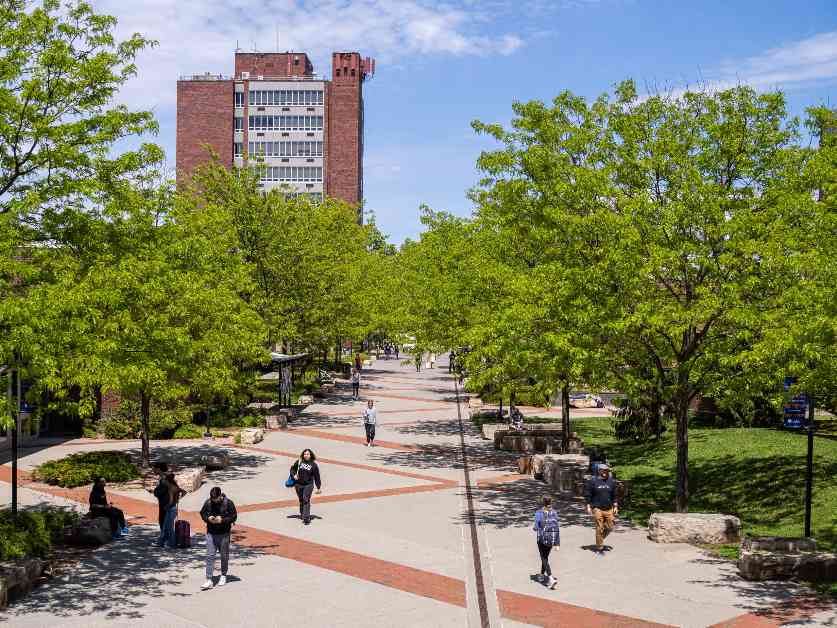In New Paltz, N.Y., Associate Professor Michael Sheridan’s business class students pitched ideas to reduce waste and emissions on campus and combat climate change. One group proposed building a solar canopy on a parking lot, which they estimated would cost $43,613 to start but would save the university $787,130 in energy costs over 50 years. The students highlighted the potential for solar energy to reduce the campus’s reliance on natural gas and referenced successful solar canopy projects at other universities.
Sheridan’s course is part of the “campus as a living lab” approach, where students engage in real-world projects to learn and address environmental issues. This teaching method has gained popularity across various disciplines, including business, English, and the performing arts, as educators aim to reduce campuses’ carbon footprints amid the growing threat of climate change.
While these initiatives offer valuable hands-on learning experiences for students, challenges remain, such as maintaining projects beyond a single semester. Despite these hurdles, experts believe that integrating sustainability efforts into education can equip students with practical skills and raise awareness about climate solutions within campus communities.
In addition to SUNY New Paltz, other institutions have also embraced sustainable practices. Dickinson College, for example, achieved a net-zero campus status in 2020 through student-led initiatives like data analyses on building efficiency and behavior change programs. Similarly, SUNY Binghamton students have worked on green purchasing systems and community gardening projects to promote sustainability on campus.
At Weber State University in Utah, students have contributed to renewable energy efforts by building solar-powered charging stations and designing net-zero houses. These hands-on projects not only enhance students’ learning experiences but also contribute to reducing the environmental impact of higher education institutions.
In the context of higher education’s significant climate footprint, initiatives like the “campus as a living lab” model play a crucial role in fostering sustainability and raising awareness about environmental issues. By empowering students to take action on climate change and promoting sustainable practices, universities can lead by example and inspire broader community engagement in environmental conservation efforts.





